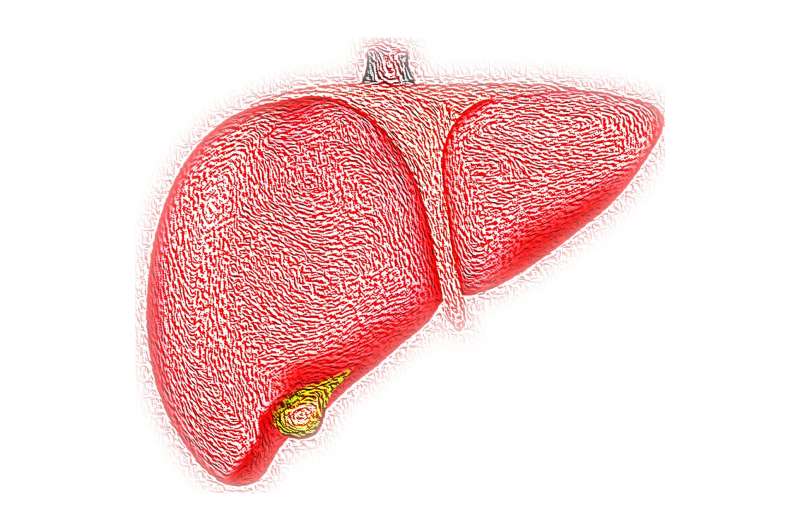Credit: CC0 Public Domain
For patients with chronic liver disease, the onset of acute-on-chronic liver failure (ACLF) instantly alters the transplant question from "if" to "when." Between 60 and 70% of patients with ACLF die within 3 months due to poor liver function and multiple organ failure. A timely liver transplant is the only way to save their lives. However, transplants have waiting lists, and myriad factors go into deciding whose needs take precedence. When the smallest change in transplant priority could lead to the death of a patient, it becomes increasingly important to have accurate ways to predict mortality risk.
While there are a few prognostic models that can predict mortality risk for patients with ACLF, they only account for patients that have some similar characteristics. These models do not account for individual variations in symptoms. The importance of predicting individual mortality risk becomes clear when you consider that though chronic viral hepatitis and alcohol use are the most common causes of ACLF, up to 40% of cases have no identifiable trigger.
Understanding this need, a group of researchers led by Dr. Zhi-Qiao Zhang from Southern Medical University, China, developed an online tool to predict individual mortality risk for patients with ACLF. "This is a rare online web tool that can be valuable in improving treatment decisions for patients due to its ability to predict mortality risk for an individual patient," says Dr. Zhang.
In their new paper, published in Chinese Medical Journal, the researchers detail their use of the random survival forest (RSF) algorithm to develop their predictive tool. RSF is a potent machine-learning method that accounts for multiple variables without making any underlying model assumptions. This is in direct contrast to another popular algorithm for prognostic prediction, the Cox proportional model. Moreover, unlike the Cox model, the RSF method accounts for the non-linear influence of variables. This is significant as most real-world symptoms do not have a linear influence on patient mortality. This makes it a powerful technique for individual prognostic prediction. The RSF model has already been used to predict prognoses for patients with tumors and cardiac arrythmias.
To develop their tool, the researchers used data from nearly 300 patients with ACLF from three hospitals in Guangdong, China, and modeled it with the RSF algorithm. They found that they could predict individual mortality risk for patients over several months, i.e., individual mortality risk curves. They also found that they could calculate the mortality of a patient at any given time. Moreover, they could provide a 95% confidence interval for this calculated mortality. These three results are invaluable when it comes to deciding treatment plans and transplant priority for patients.
Finally, the researchers compared the results of their individual mortality risk prediction tool with the Cox model, as well as the model for end-stage liver disease (MELD), the most widely used prognostic model for liver cirrhosis. They found that the RSF model was superior to other models for prognostic prediction.
However, the researchers were keen to caution against the shortcomings of the study. A data-driven model like the RSF model is only as good as the data it is based on. The lack of independent data for verification and the small sample size of the study could affect the reliability of its predictions. Nevertheless, the new mortality risk prediction tool could prove invaluable in guiding treatment decisions for patients with ACLF.
To allow both patients and medical practitioners to gain insight on mortality risk for patients with ACLF, Dr. Zhang's team has made the predictive tool available online for free. "Further studies with larger sample sizes that account for additional risk factors like thyroxine levels and liver-to-abdominal area would help improve the diagnostic accuracy and clinical application value of the prediction tool," concludes an optimistic Dr. Zhang.
More information: Zhi-Qiao Zhang et al, Individual mortality risk predictive system of patients with acute-on-chronic liver failure based on a random survival forest model, Chinese Medical Journal (2021). DOI: 10.1097/CM9.0000000000001539
Provided by Chinese Medical Journal




















